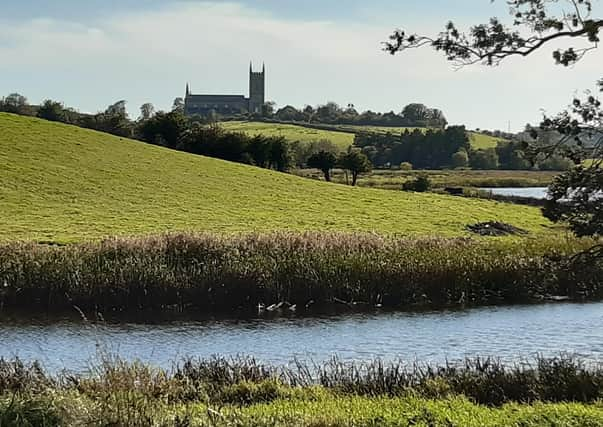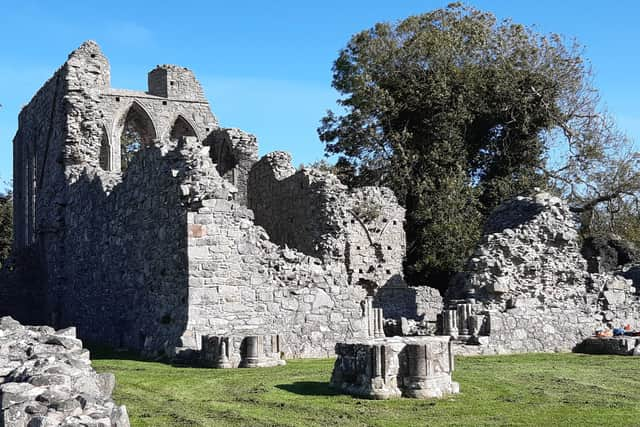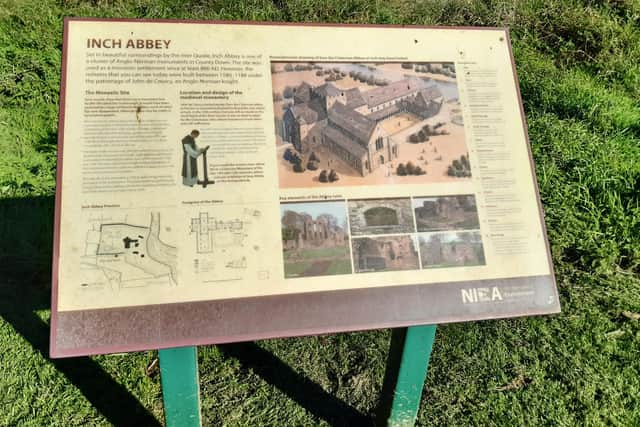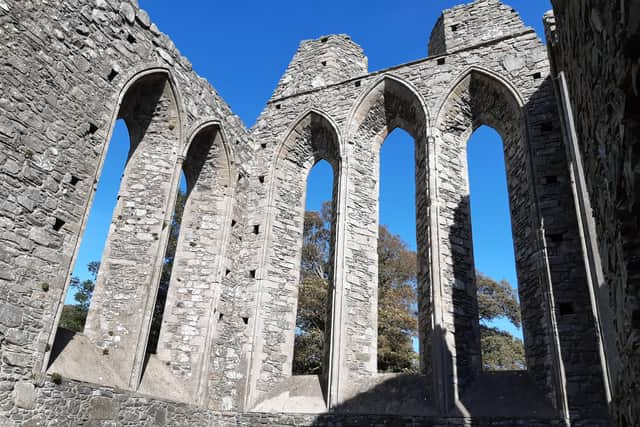STEPPING BACK IN TIME: Saintly locale of Quoile, Inch and Downpatrick


The reason? Simply because it is the most amazing part of the country; it has acres of history and vistas, breathtaking paths to walk the dog, and would be a wonderful place to see out our latter years.
That sense of the place was perfectly captured by the Roamer in late August 1938, with less than a year to go before the outbreak of the Second World War, when they wrote: “I stopped at the Quoile Bridge near Downpatrick a few nights ago to gaze at one of the most beautiful spectacles I have ever seen.
Advertisement
Hide AdAdvertisement
Hide Ad“The setting sun shone over the tops of the high trees that stand on the far bank of the river and threw on the water a reflection of sparkling gold.


“It turned the sky above the ruins of Inch Abbey into a golden sea and transformed small black clouds into lonely islands.
“The view of the Quoile from the old bridge where the road to Downpatrick branches off to Strangford is one of the loveliest pieces of scenery in Ulster and I know of no place that looks more beautiful on a moonlit night, but although I have often stopped there before to admire the view I had never seen anything like this late August sunset.
“Beyond the bend of the river, sky and water were so subtly blended that it was almost impossible to tell where one ended and the other began.
Advertisement
Hide AdAdvertisement
Hide Ad“The rippling pattern of gold on the river caught the eye of every passing motorist, and one after another stopped to watch the sun sink.”


Antiquarians have travelled to the area from all over the country (and further afield no doubt) because of the the locality’s connections with the legend of St Patrick and the Christian relics which litter the surrounding hills and fields.
One such site is Inch Abbey, from where you can look across the Quoile River to St Patrick’s Cathedral, sitting proudly over Downpatrick.
The News Letter of Saturday, July 1, 1905 reported on one antiquarian’s discovery at Inch Abbey.
Advertisement
Hide AdAdvertisement
Hide Ad“A well preserved example of ‘elder day’ art has recently been found in a field adjoining the Abbey of Inch,” the article read. “It is an oblong stone, with two attendant figures rudely carved in low relief, and was likely the central panel of the altar.


“Judging from the position the feet, which are crossed, it is probably of 12th or 13th century workmanship, as most, if not all, of the 11th century crucifixes have the feet nailed apart. Major Purceval-Maxwell, DL, of Finnebrogue has kindly given permission to have photographs taken for publication in the antiquarian journals.
“As the members of the Royal Society Antiquaries of Ireland will visit Down Cathedral, the high cross, and St Patrick’s grave on 5th inst, it will be placed in convenient position the cathedral.”
Of the man who discovered the stone the News Letter remarked: “Mr S Hastings, while viewing the sixteenth century armorial stones of the Maxwell family, found the stone slightly embedded in the ground; the edges showed chisel marks. He carefully raised it, and, removing the soil from the under-surface, saw the carved rood and figures.
Advertisement
Hide AdAdvertisement
Hide Ad“When the antiquaries have seen the crucifix it will be restored to the Inch Abbey, and probably inserted in wall the great east window.”
Is there a historical place in Northern Ireland that you think that I should explore? Email: [email protected].
Comment Guidelines
National World encourages reader discussion on our stories. User feedback, insights and back-and-forth exchanges add a rich layer of context to reporting. Please review our Community Guidelines before commenting.